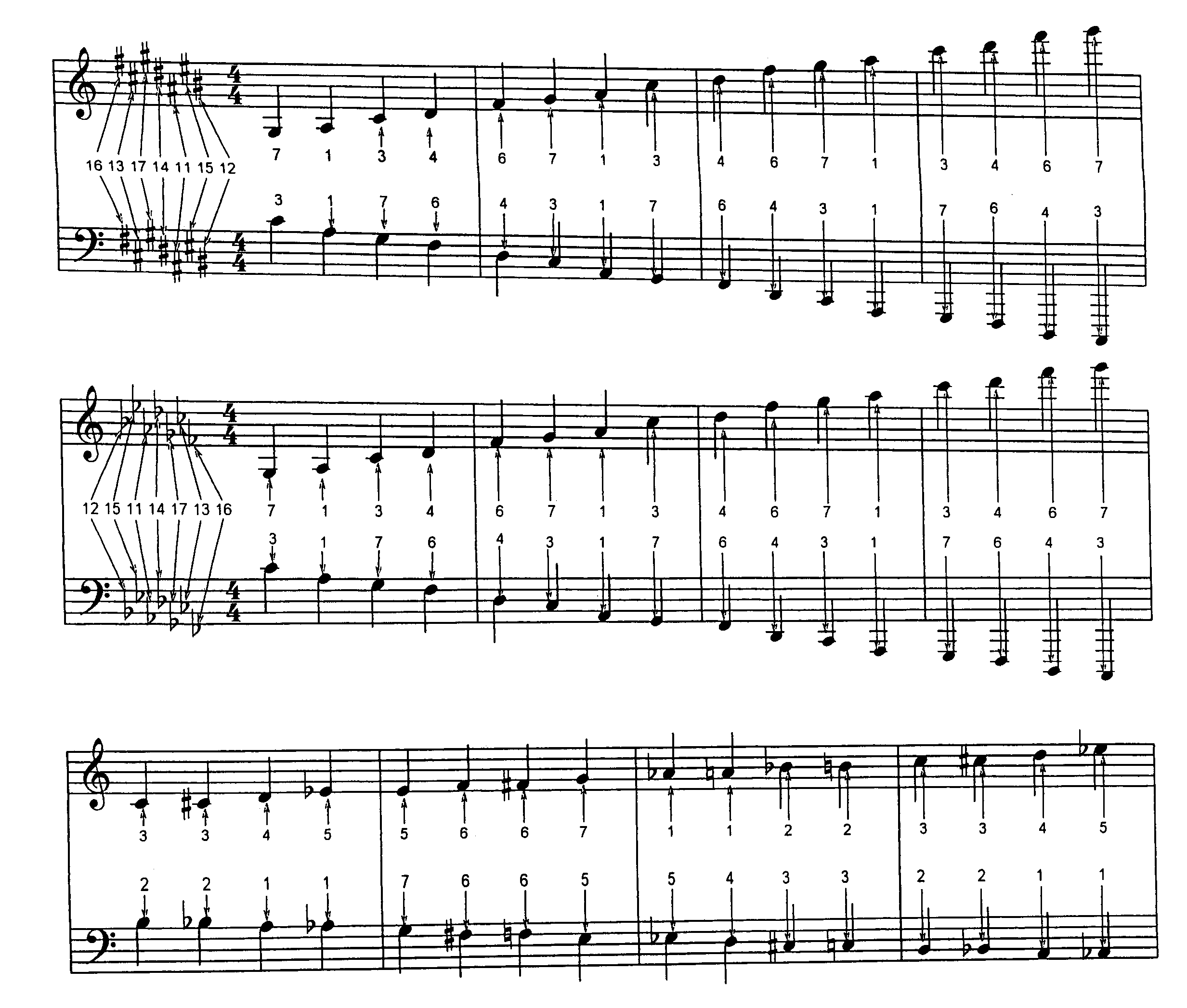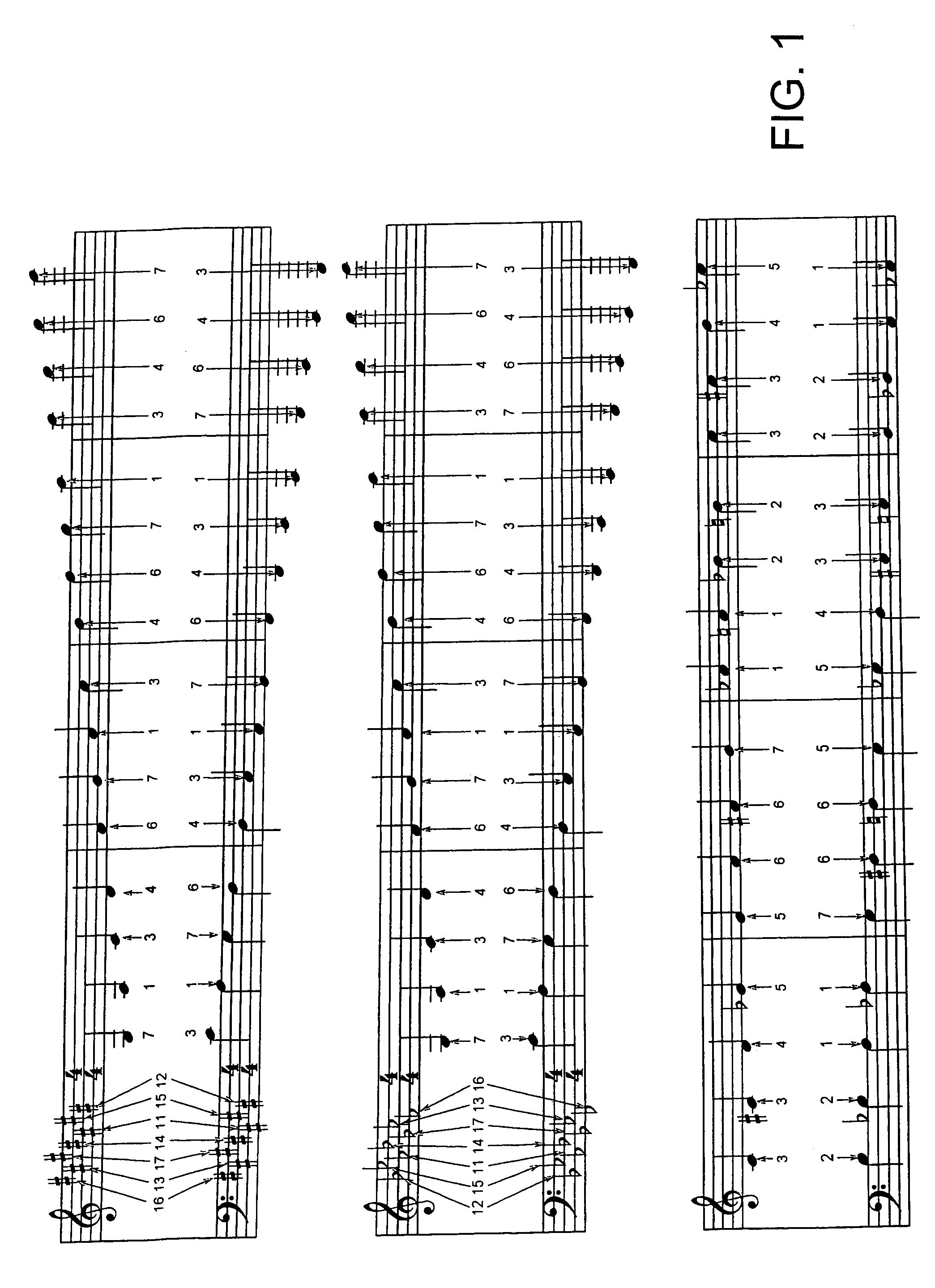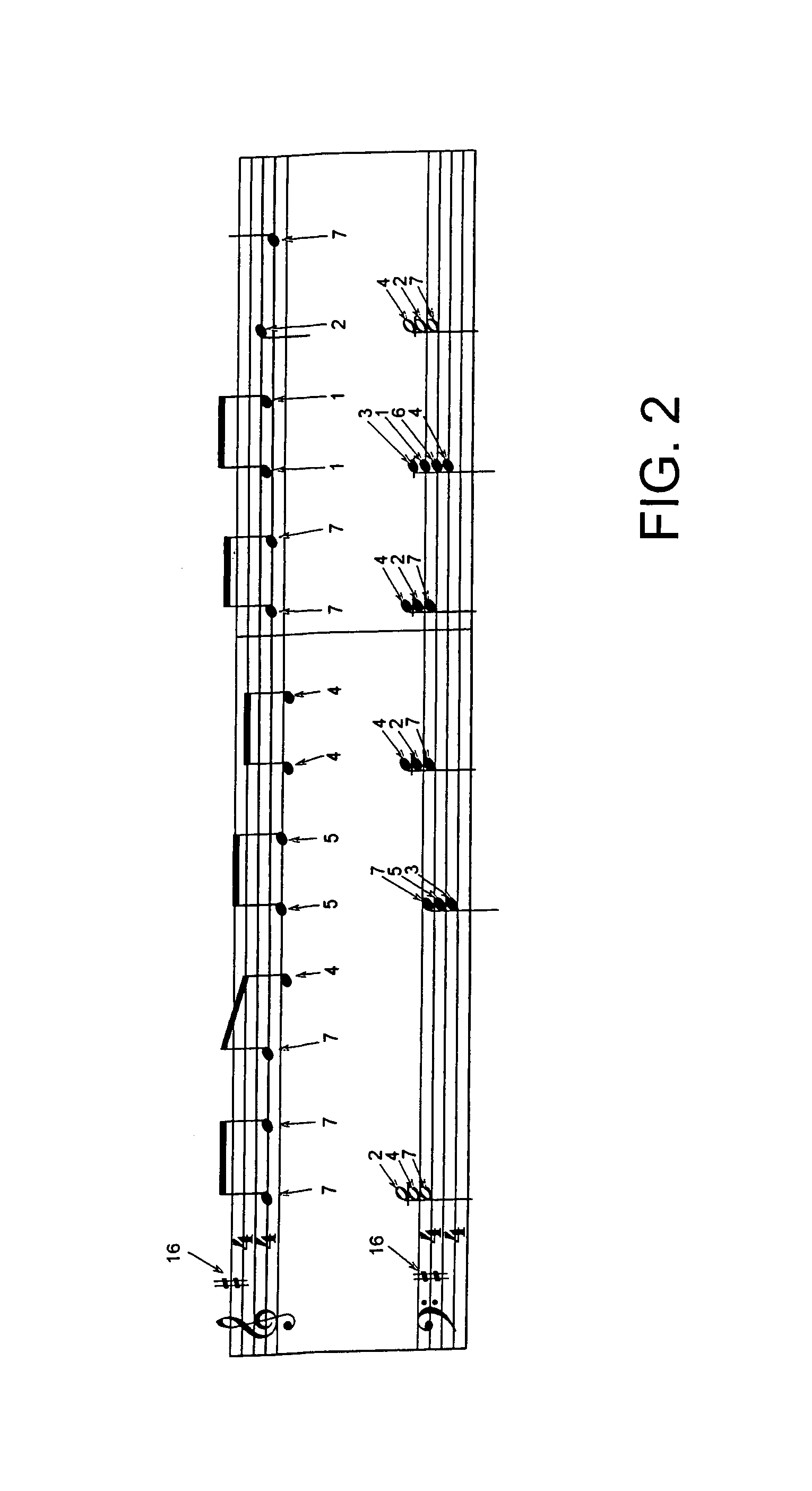Colored music notation system and method of colorizing music notation
- Summary
- Abstract
- Description
- Claims
- Application Information
AI Technical Summary
Benefits of technology
Problems solved by technology
Method used
Image
Examples
Embodiment Construction
[0053]FIG. 1 illustrates a colorized musical score generated according to the method of the invention. The colors for the natural notes are selected from the list of colors reproduced in Table 1 below, in CMYK standard format, with a tolerance of plus or minus ten points, and preferably with a tolerance of plus or minus five points in any or all of the C, M, Y or K attributes for any of the colors. The colors are identified in FIGS. 1 and 2 by the color number given in Table 1:
[0054]
TABLE 1ColorCMYK DefinitionCorresponding Natural NoteColor 10.100.0.0AColor 20.52.100.35BColor 30.0.0.100CColor 413.39.0.0DColor 560.0.100.0EColor 644.95.0.0FColor 7100.0.0.0G
[0055]It will be appreciated that the any of the listed colors could be assigned to the various natural tones in an octave in any combination, as long as each tone is represented by a single color, and FIG. 1 shows merely one example. However, the example of FIG. 1 is preferred because it maximizes easy recognition of common chord c...
PUM
 Login to View More
Login to View More Abstract
Description
Claims
Application Information
 Login to View More
Login to View More - R&D
- Intellectual Property
- Life Sciences
- Materials
- Tech Scout
- Unparalleled Data Quality
- Higher Quality Content
- 60% Fewer Hallucinations
Browse by: Latest US Patents, China's latest patents, Technical Efficacy Thesaurus, Application Domain, Technology Topic, Popular Technical Reports.
© 2025 PatSnap. All rights reserved.Legal|Privacy policy|Modern Slavery Act Transparency Statement|Sitemap|About US| Contact US: help@patsnap.com



